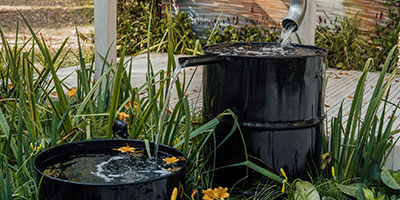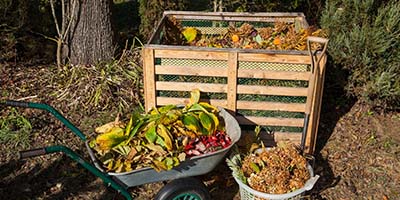How to Use Plants to Repel Bugs

Plants to Repel Bugs
Looking for a more natural way to keep the bugs at bay? Using plants that repel insects naturally is a great alternative to using harsh, DEET-heavy skin sprays and pesticides in your garden. But before picking plants or herbs that repel bugs in your backyard, it’s important to know what you’re looking for and how certain plants work to repel bugs.
The truth is, herbs and plants that repel insects usually don’t give off a strong enough scent to deter pests all by themselves. What makes them insect repellent plants is the oil within them, which can be used in eco-friendly bug spray recipes for your skin or other plants. For added garden protection, companion planting is a great way to naturally deter bugs from your most vulnerable plants.
What Is Companion Planting?
Companion planting is a planting method that pairs vegetables and flowers together to improve growth and/or repel pests.
You can reduce your environmental footprint by sticking with eco-friendly methods to keep bugs off your skin and out of your garden. Using these naturally insect repellent plants is a great place a start.
1. Citronella Grass
Citronella grass is perhaps one of the best-known plants that repel bugs. Their lemon-scented stalks have long been touted for their mosquito-repelling abilities. You can crush its leaves to apply its oil to your skin or extract the citronella oil to make your own DIY natural bug repellent. But don’t confuse citronella grass with citronella-scented geraniums – these aren’t true citronella plants and won’t repel bugs.
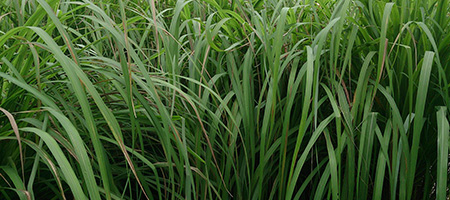
What You Need to Know
This Plant Repels: Mosquitoes, stable flies, leeches.
Sunlight Needs: Full to partial (3 to 6+ hours of direct sun per day)
Growing Zones (check your zone here): 4-11
Tips for Growing Citronella: Citronella grass can be grown in containers or in your yard, but because they are a clumping grass, you will need to divide it each spring. This plant needs a lot of water and can wilt if placed in sunlight that’s too direct, so be sure to place it in a well-watered spot with bright but filtered sunlight.
2. Rosemary
This Mediterranean herb is more than just a pretty garnish. Rosemary is one of the most popular herbs that repel bugs and is actually an evergreen shrub closely related to basil, mint and oregano. It is easy to grow and use in DIY natural bug repellent recipes. It can also be used as a companion plant for cabbage, carrots and beans.
What You Need to Know
This Plant Repels: Mosquitoes, cabbage loopers, carrot flies, Mexican bean beetles.
Sunlight Needs: Full (6+ hours of direct sun per day)
Growing Zones: 8-10
Tips for Growing Rosemary: Rosemary comes in two forms: herb or landscaping shrub. Because the herb form has more oil, it is the better choice for cooking and DIY bug repellents. While rosemary does best in hotter growing zones, it can be potted and grown year-round inside any home with the right sunlight.
3. Chives
Like rosemary, chives are among the most popular herbs that repel bugs. When crushed, their strong, onion scent can keep mosquitoes away, but it doesn’t make for a very pleasant perfume. These plants are probably best used as companion plants for carrots and roses to ward off carrot flies, aphids and Blackspot, a fungal disease that affects rosebushes.
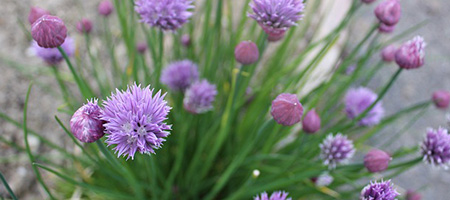
What You Need to Know
This Plant Repels: Aphids, carrot flies, Japanese beetles, slugs, ants, fleas.
Sunlight Needs: Full to partial (3 to 6+ hours of direct sun per day)
Growing Zones: 3-10
Tips for Growing Chives: Chives can be potted and grown indoors, as long as they receive at least 4 to 6 hours of sunlight a day. When planted outside, be sure to space chives 8 to 10 inches apart in rich, well-drained soil.
4. Garlic
Garlic is an easy-to-grow plant that repels aphids and other insects. Like chives, its pungent smell can keep mosquitoes away, but it can be overpowering, so it's best kept in the garden. According to Kevin Espiritu, founder of Epic Gardening, garlic is one of the most commonly used natural pesticides: “Garlic spray is a classic non-toxic repellent. It’s a few crushed cloves of garlic, water, and a few drops of insecticidal soap. You can also apply neem oil, though don’t consume the plant immediately after – it’s non-toxic but you need to let the azadirachtin, the active compound in neem oil, decompose.”
What You Need to Know
This Plant Repels: Mosquitoes, root maggots, slugs, aphids.
Sunlight Needs: Full to partial (3 to 6+ hours of direct sun per day)
Growing Zones: 0-10
Tips for Growing Garlic: Garlic is extraordinarily hardy, growing well in even the coldest climates, like Alaska. It is best planted in late fall, as its roots will take hold throughout the winter. The exact month to plant will depend on the growing zone, so be sure to find your own local zone before planting.
5. Marigolds
If you’re looking for pretty flowers that repel bugs, marigolds are a great choice. Marigolds actually provide food for hover flies, which eat aphids and other pests but do not harm humans. Some strains of marigold, particularly the Stinking Roger, can even repel biting flies. They are also great companion plants for melons, cabbage and beans, as they keep beetles away.
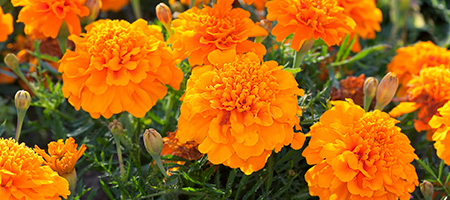
What You Need to Know
This Plant Repels: Aphids, white flies, nematodes, Mexican bean beetles.
Sunlight Needs: Full (6+ hours of direct sun per day)
Growing Zones: 2-11
Tips for Growing Marigolds: Marigolds are extremely easy to grow and their disease and pest-resistant blooms will thrive throughout the summer. Be sure to water them at the base of the plant and only water during hot periods, as their dense blooms can rot if they become too wet.
6. Basil
Basil plants are useful both in the kitchen and as natural insect repellent plants. Rub a few crushed basil leaves on your skin to keep mosquitoes and other winged pests away, or make your own basil bug spray right at home. They can also be used as companion plants to carrots and asparagus.
What You Need to Know
This Plant Repels: Mosquitoes, carrot flies, asparagus beetles, white flies.
Sunlight Needs: Full (6+ hours of direct sun per day)
Growing Zones: 10+
Tips for Growing Basil: Basil needs around 6 hours of sunlight a day and is extremely sensitive to cold weather. Therefore, it can only be used as a perennial in growing zones 10 or higher. However, it can be replanted annually or grown indoors with enough sunlight over the winter.
7. Cedar Trees (Thuja)
In addition to being great trees for privacy, these hardy cedar trees are also touted as effective plants that repel mosquitoes, ants, ticks and other bugs, as they contain a common ingredient found in many insect repellent products. You can extract the cedar oil from the leaves, berries and bark of your thuja to create your own natural bug repellent.
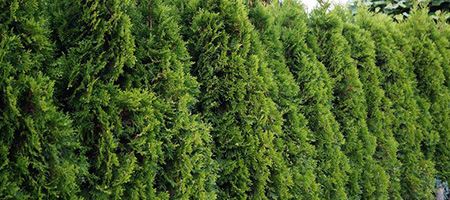
What You Need to Know
This Plant Repels: Mosquitoes, fleas, ticks, ants, moths, cockroaches.
Sunlight Needs: Full to partial (3-6+ hours of direct sun per day)
Growing Zones: 5-9
Tips for Growing Thuja: Thuja is a very durable cedar tree that can handle snow and ice in the wintertime and droughts in the summertime. These trees can grow very large depending on the strain you choose, so be sure to give them plenty of space to grow.
8. Catnip
Catnip might make your garden popular with local felines, but definitely not with insects. One study found that catnip is 10 times more effective at repelling mosquitoes than DEET, making it a potent natural alternative to harsh commercial bug sprays. It has a chemical called nepetalactone that repels bugs, which you can use to make your own DIY natural bug repellent. Catnip can also be a companion plant to beets, pumpkins and squash.
What You Need to Know
This Plant Repels: Ants, mosquitoes, beetles, aphids, weevils, cockroaches.
Sunlight Needs: Full to partial (3 to 6+ hours of direct sun per day)
Growing Zones: 3-9
Tips for Growing Catnip: Catnip is actually considered an invasive species, so its best to plant this herb in a buried container to prevent it from spreading. Your cats will love this plant to death, quite literally – they may roll in or even eat it if you don’t protect it properly. Catnip can be grown inside, but requires a lot of sun, so just be sure to give it plenty of light.
9. Mint
Mint has a number of medicinal and culinary uses, but it is also one of the most effective herbs that repel bugs. You can use different mint varieties to repel different insects, both on your skin and in the garden. They can be used as a DIY natural bug repellent and are good companion plants to beets, cabbages, peppers, broccoli and squash.
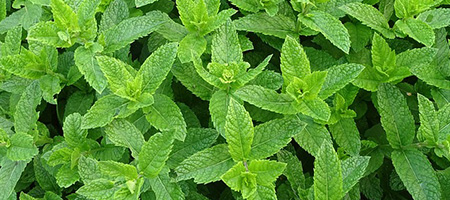
What You Need to Know
This Plant Repels: Fleas, moths, ants, squash bugs, cabbage looper, beetles, aphids, flies.
Sunlight Needs: Partial (3 – 6 hours of direct sun per day)
Growing Zones: 3-11
Tips for Growing Mint: Like catnip, a member of the mint family, these natural insect repellent plants are invasive, so plant them in pots to control their spread. Unlike most herbs, mint does well even in shady areas, though it can handle direct sun if watered enough.
10. Lavender
In addition to their sweet, relaxing scent, lavender plants are some of the most effective flowers that repel bugs, including their Southwestern cousin, the scorpion. It can be dried in bunches and hung around the house to prevent flies, or you can extract its oil for a natural lavender bug repellent. Also, lavender “attracts honeybees, making it a must-have in most gardens,” says Kevin Espiritu.
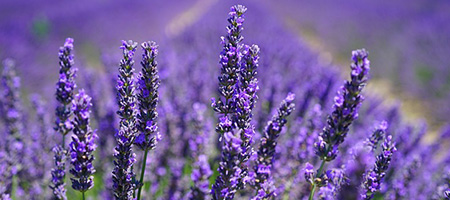
What You Need to Know
This Plant Repels: Flies, mosquitoes, fleas, moths, scorpions.
Sunlight Needs: Full (6+ hours of direct sun per day)
Growing Zones: 5-10
Tips for Growing Lavender: Lavender does best in well-drained soil and should not be overwatered. Heavy mulching can suffocate the plant, so try to break up dense soil with pea gravel on top of the soil around the base of the plant.
Not sure where to start when it comes to gardening?
Check out our garden projects on a budget!
And Always Remember: Not All Bugs Are Bad
Prominent biologist Carl Barton Huffaker once said, “When we kill off the natural enemies of a pest, we inherit their work.”
Before trying to make your garden entirely bug-free, remember that some bugs can actually be very useful to have around. For instance, spiders and green lacewings prey on plant-hungry aphids and beetles, while dragonflies love to eat the larvae of pesky mosquitoes.
Using natural defenses against pests, including plants that repel bugs, is just one way you can protect these important critters, and the environment they work so hard to defend.
For more tips on how to use plants to repel bugs, check out and download this helpful graphic guide from the experts over at ProFlower.

